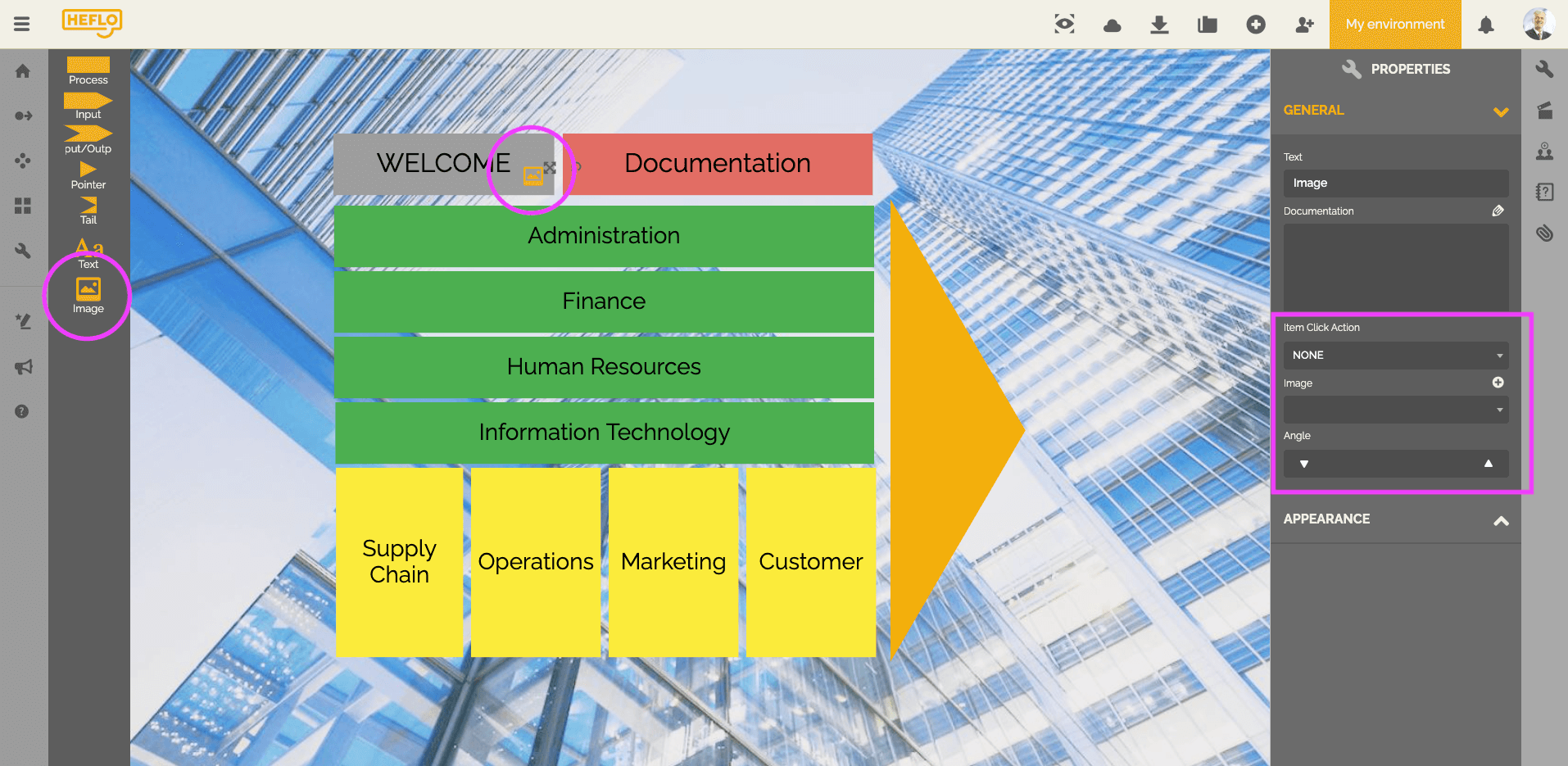A Value Chain diagram can be used to decompose processes and its relationships, with the possibility of describing the delivery of value to the customer. You can see below an example of a Value Chain diagram:

It can also be used to create a first level process map, providing an easy-to-understand overview of the processes for people from different areas in the organization.
It is an easy way to read and interpret diagrams, and it can include several levels up to the most detailed of all, represented by a BPMN diagram.
How to create a Value Chain Diagram
Creating this type of diagram is similar to creating a BPMN diagram. The only difference is in the new diagram dialog box, where you must select the corresponding option. The sequence of steps is as follows:
- In the process editor, click on the add icon.
- In the new diagram dialog box, enter the name and the type “Process Landscape”, as shown in the picture below:
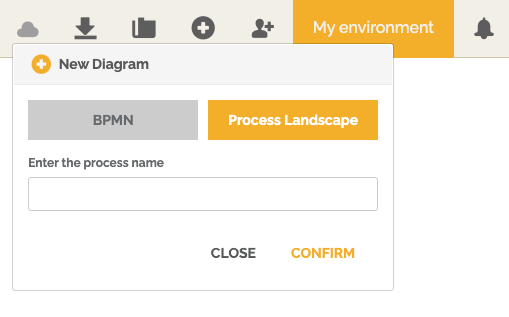
After completing the dialog box above, the drawing area will be presented, which has on the left the following elements for modeling:

Background image
You can put a background image to better personalize your value chain diagram.
To do this, go to the process properties and click on: Background image

Choose your image file, and choose the style of this image according to your need. Usually for large images we choose “scale” but you have different options to adapt this to your objective.
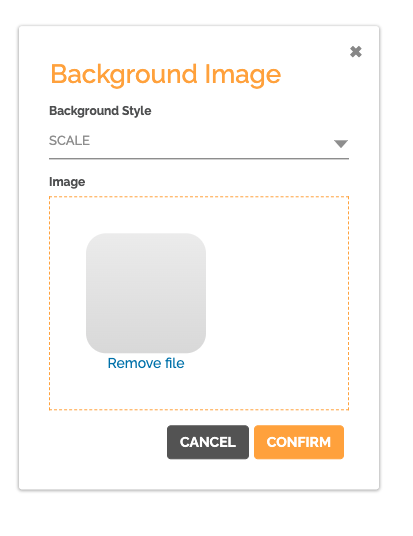
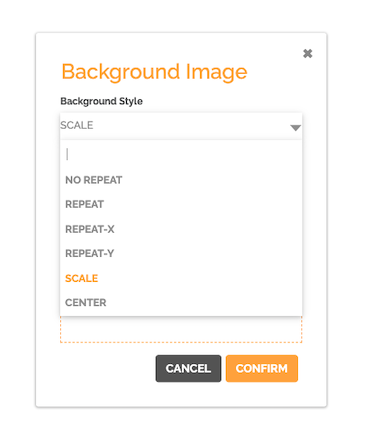
It’s easiest to start modeling your landscape process by including a background image, but you can do this after you’ve created elements.
Model your value chain diagram
Drag the elements from the toolbox to the drawing area and start modeling!
If you want to modify any property, it is very easy. Select the element in the drawing area and then access the properties tab on the right:
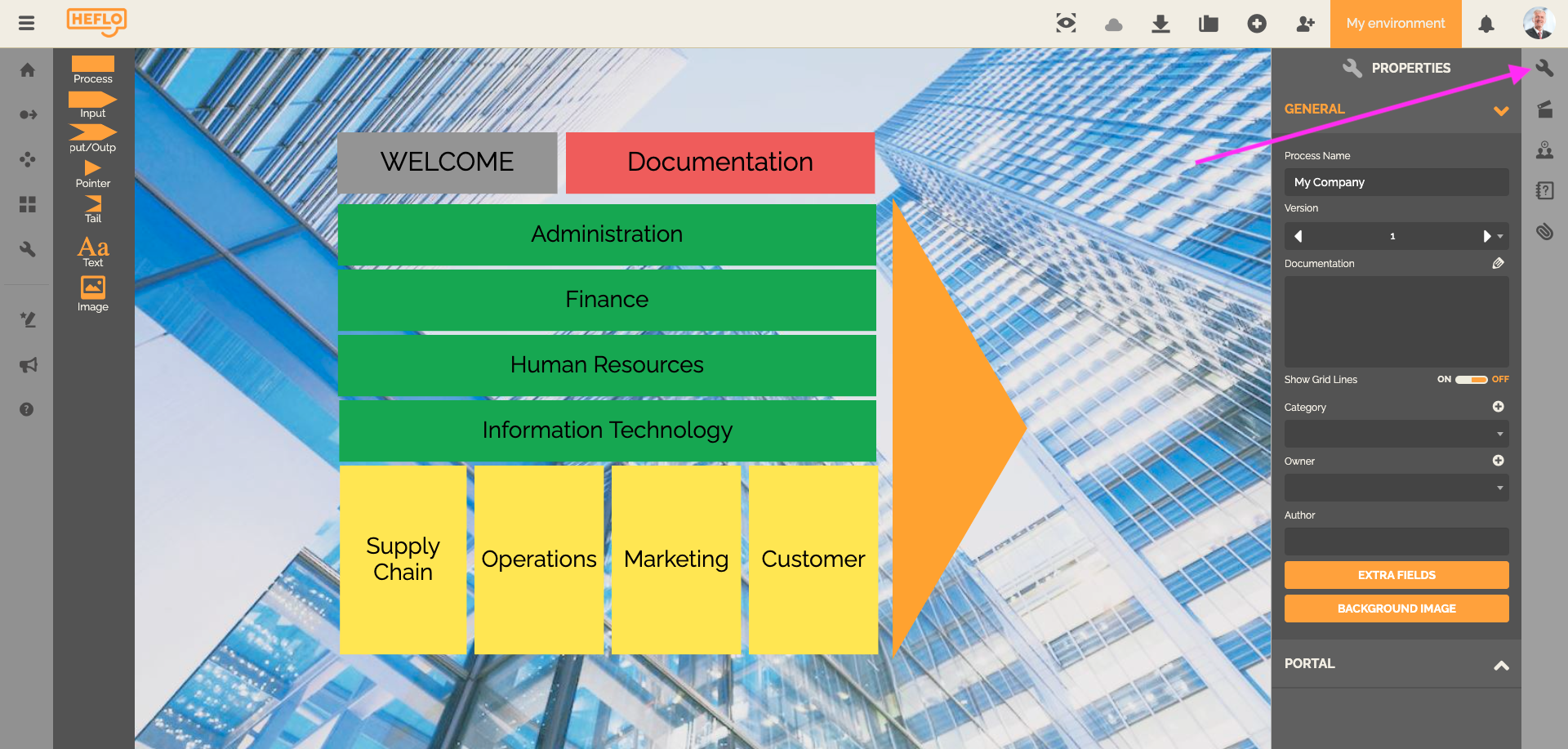
How to link processes
You can link a series of processes to each element of your diagram. In order to do that, follow these steps:
- Select the element in the diagram.
- Select the properties tab on the right.
- Select “process navigation” and click on “Linked processes”
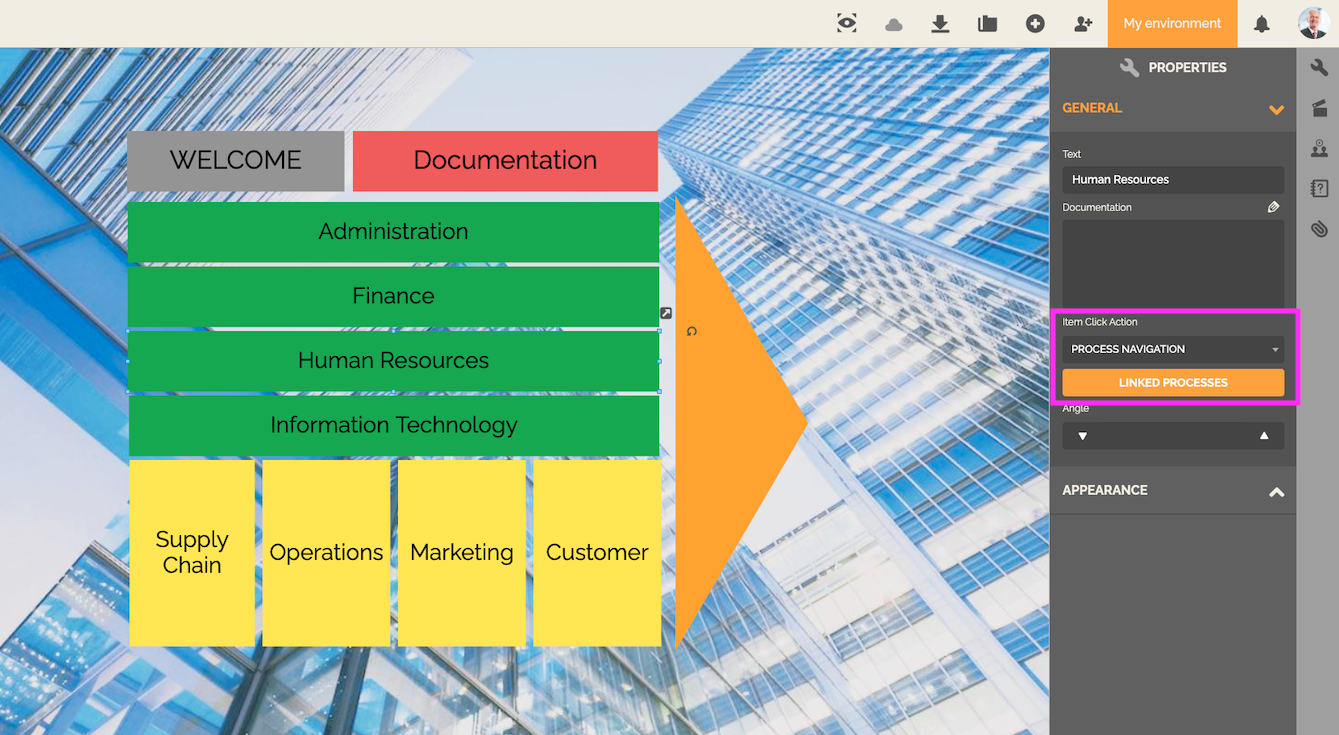
- In the process link configuration screen, you can link one or more processes, a process category, it is even possible to link another value stream diagram, thus creating several levels.

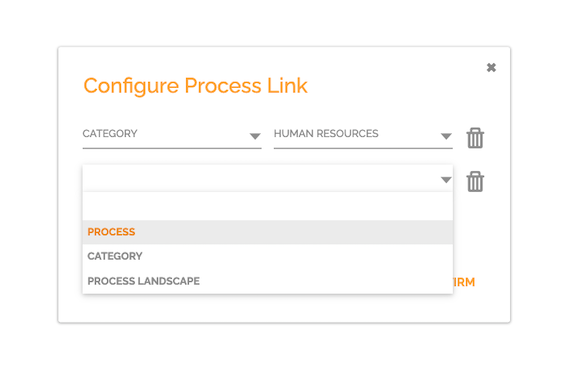
Other possible actions
You can also :
– Display the documentation linked to an element. To do this, choose the option “show documentation”. When the user clicks on this element, he will then be able to see a pop-up display with all the information found in the documentation section of this element.

– Give the possibility to your user to download elements. To do this, choose the option “preview and download attachments”. When the user clicks on this element, he will then be able to see a pop-up display with all the elements that have been appended to this element. And he will be able to download these elements.

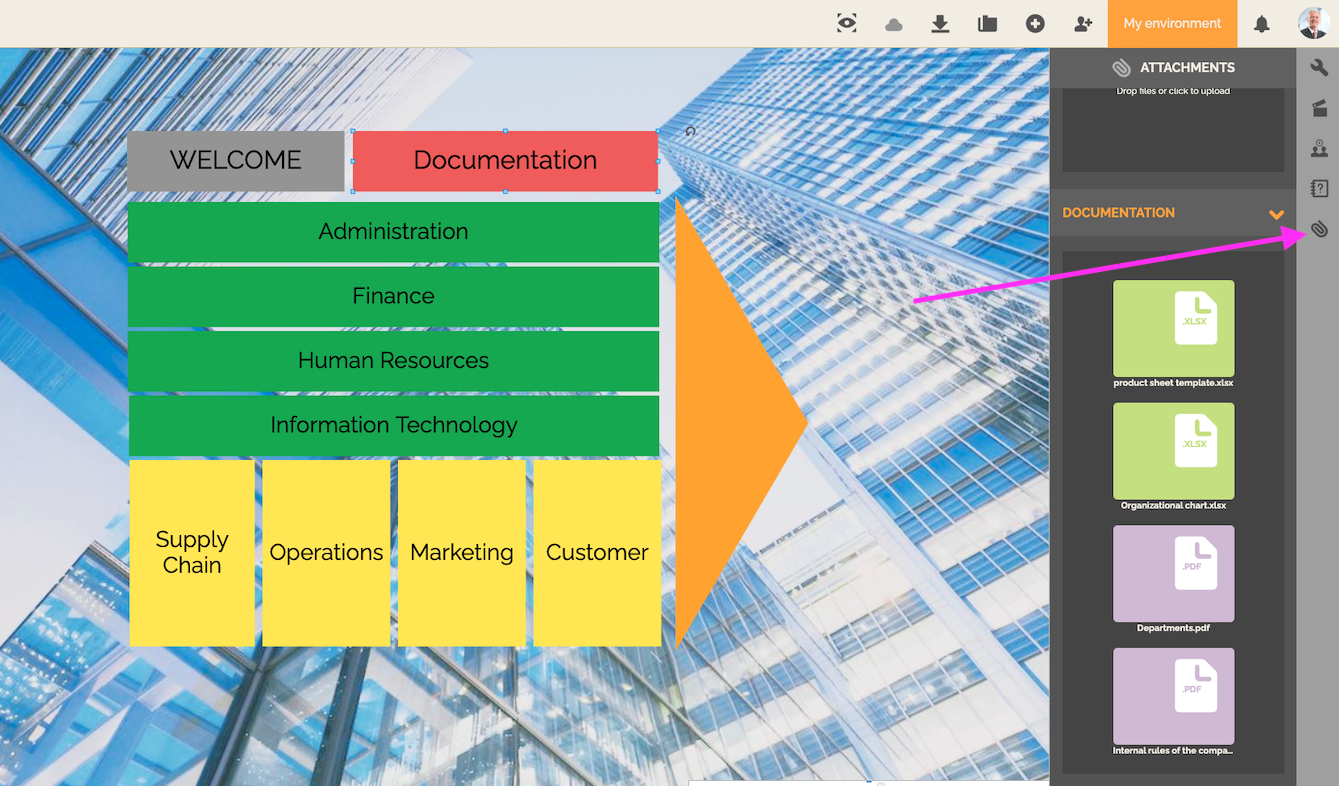
– Give the possibility of navigating through the different elements of this landscape process. To do this, choose the option “task navigation”. You must then choose the target element. From that moment, when the user clicks on this element, he will then be directly redirected to the target element. This is often used when the process landscape is large, it makes it easier for the user to navigate.

Image type element
In addition to classic elements, you can add images, and you can associate the different actions in the same way as a classic element. For information, the size of this file cannot exceed 100 KB.

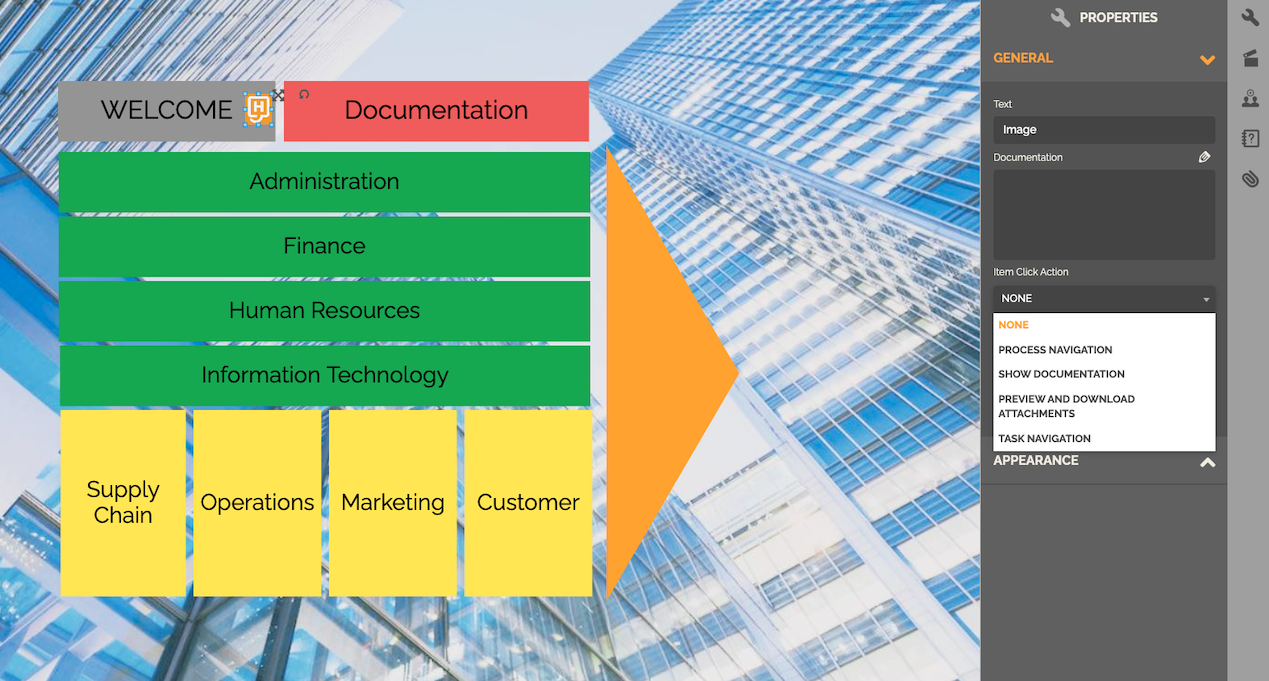
Zoom in on the portal
One of the purposes of this process type is to customize your process portal. It is therefore important to have a command to zoom in or zoom out your process so that it appears in the best possible shape when the user is on this page.
To customize this, click on the process properties, go to the section: portal. You then have the information: Zoom, with different options. I advise you to choose “zoom to fit all”. This will automatically zoom in on the set of items so that it appears with dimensions suitable for the process portal page.
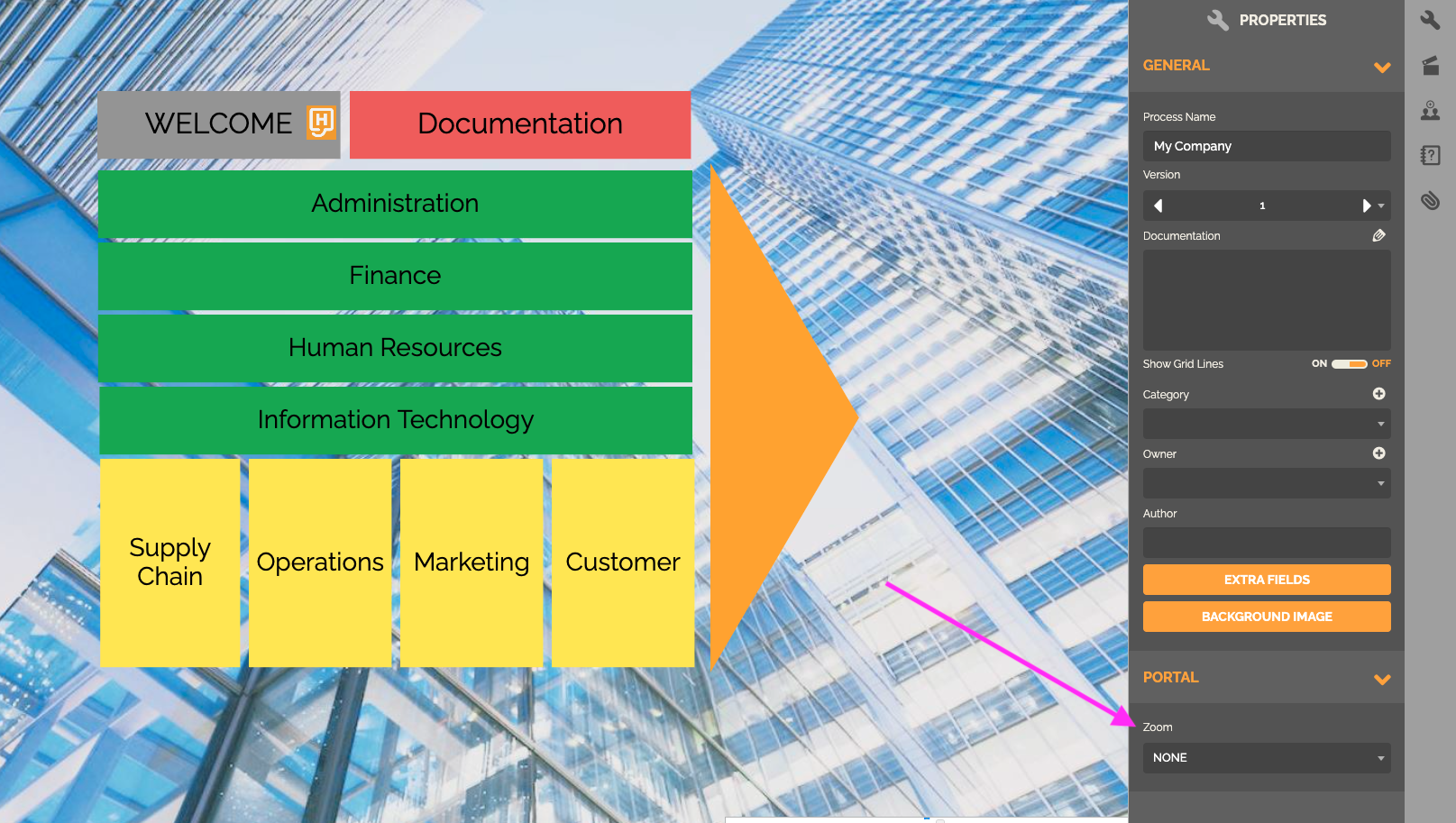
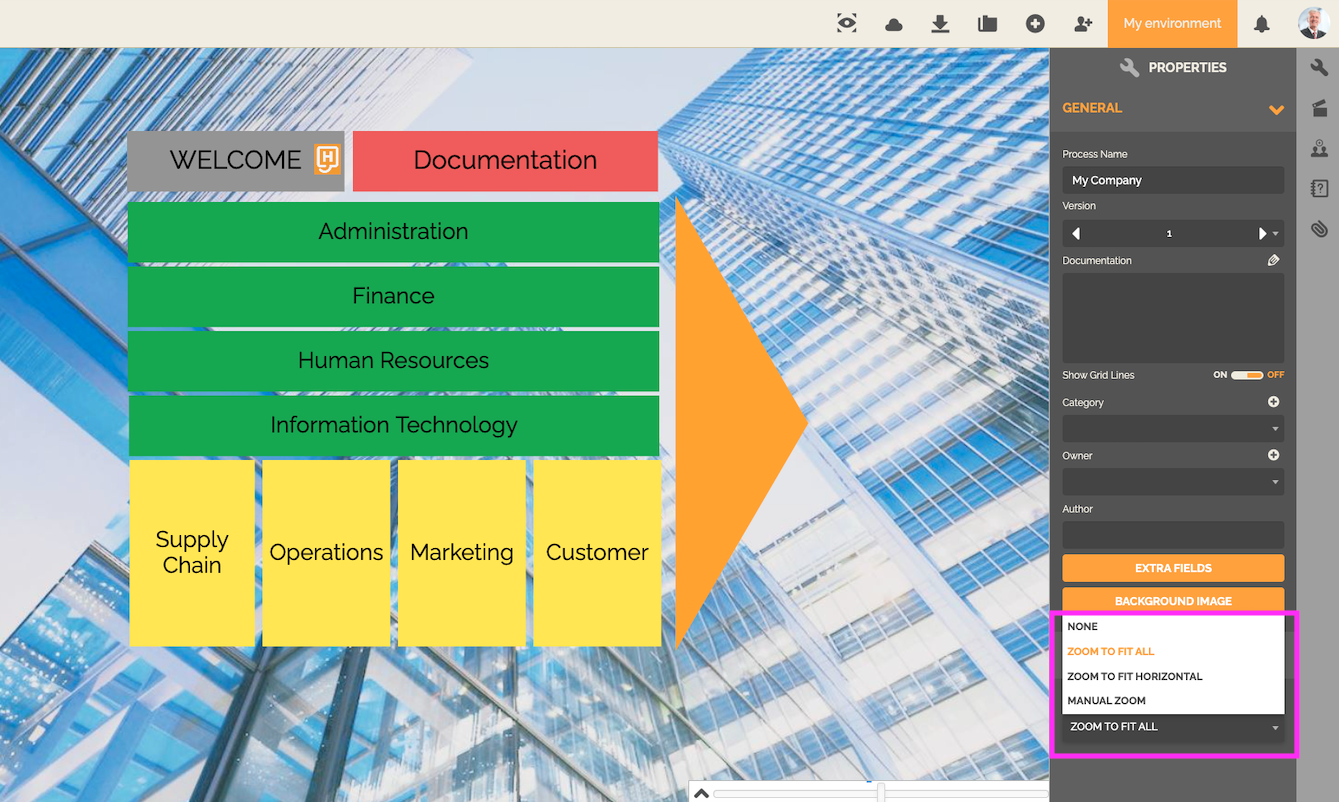
Publish the Value Chain on the Portal
In order to use a specific value chain diagram as a starting point on the portal, follow these steps:
- Select the actions tab on the right.
- Click on “publish documentation”.
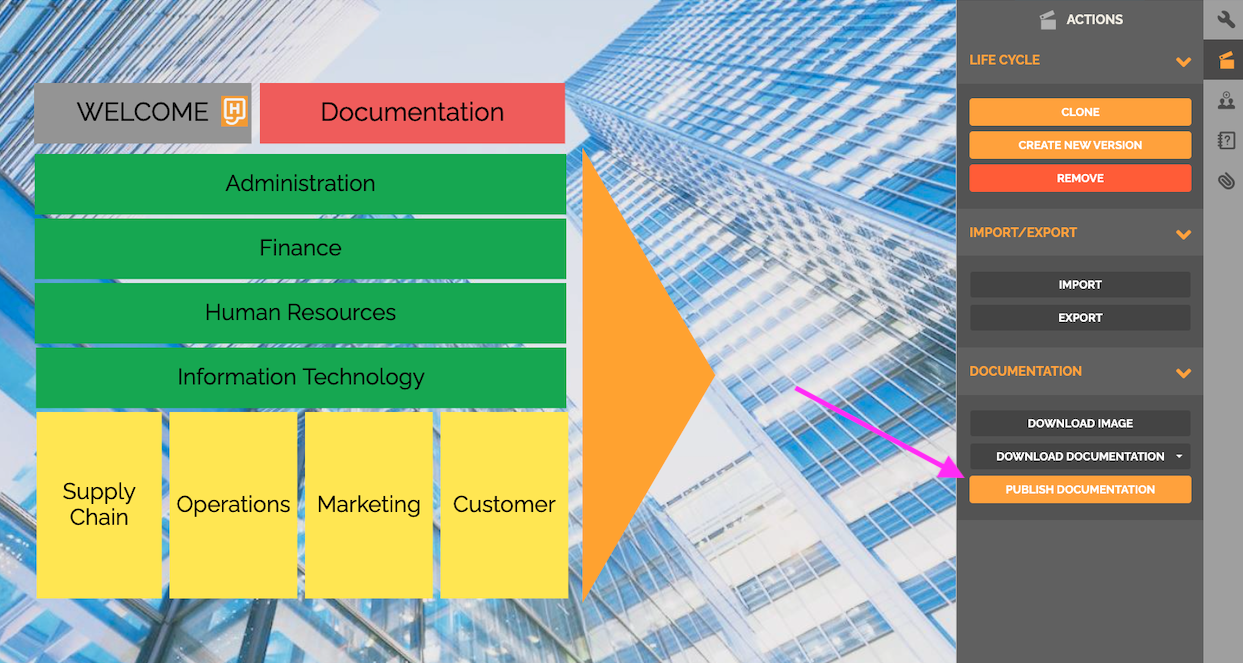
After the publication, the diagram will be displayed on the portal as follows:
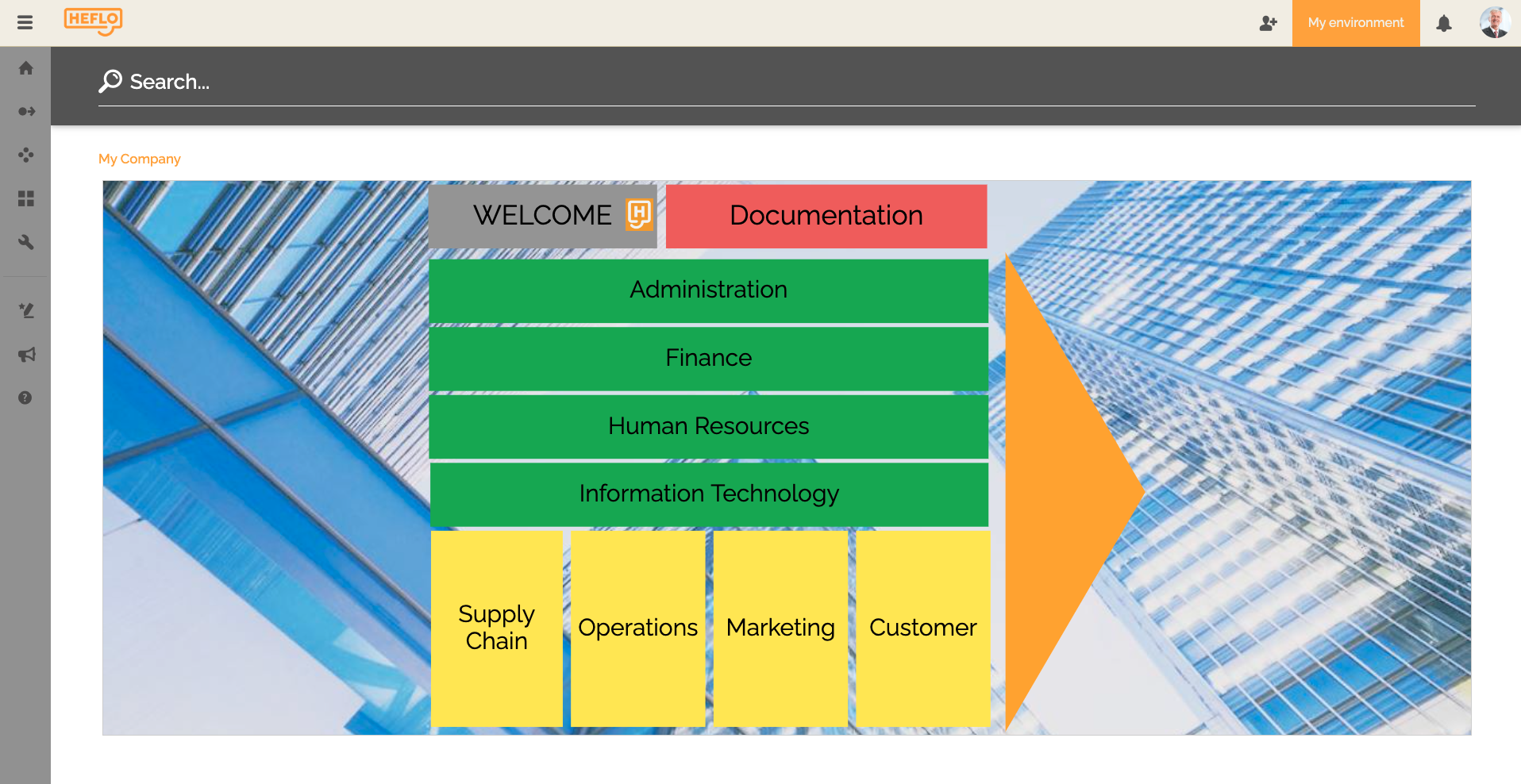
All the behaviors defined on each element will also be available on the documentation of this process
To undo a publication, go back to the process editor and take the following steps:
- Select the actions tab on the right.
- Click the button “Cancel publishing”.
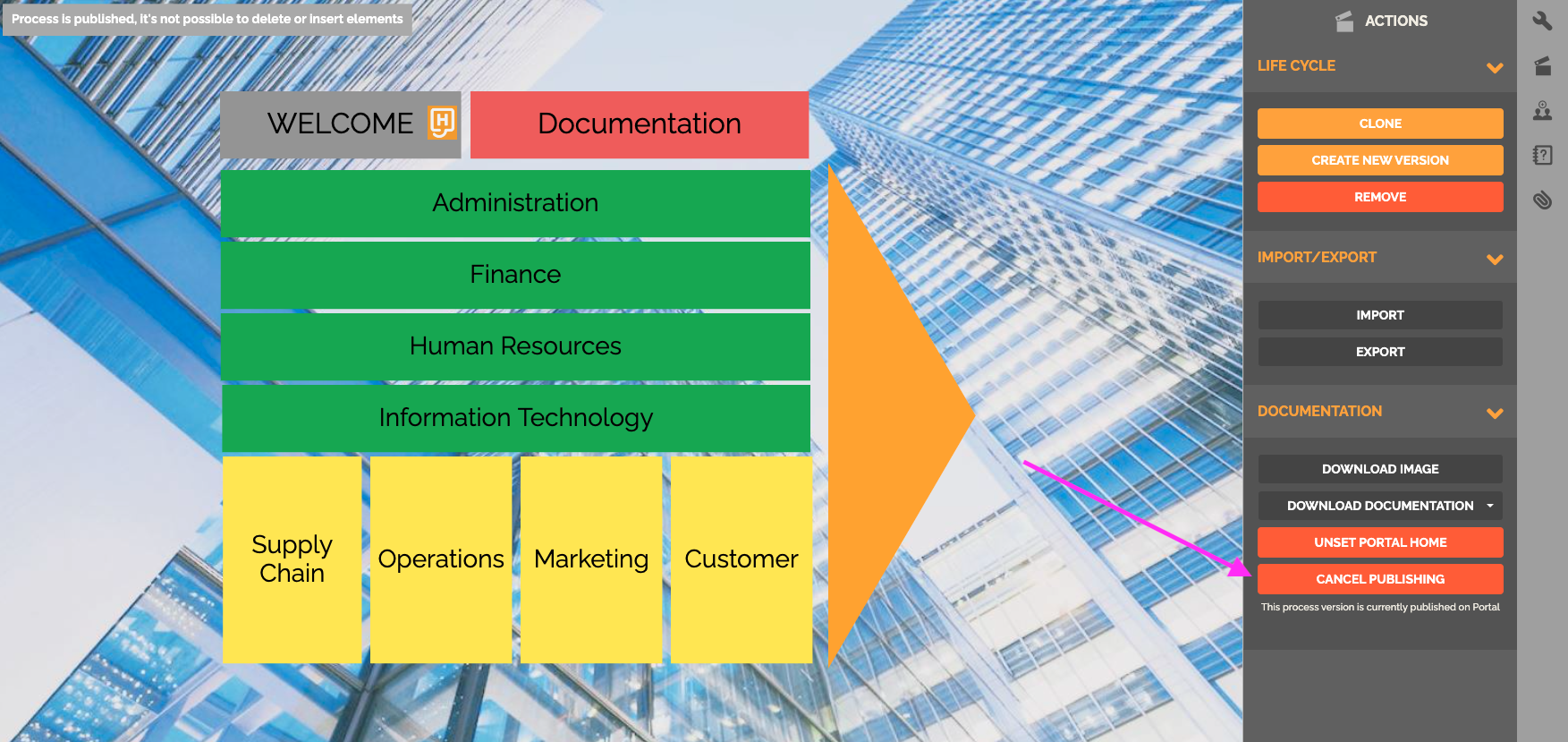
As for a BPMN process, you can create process versions to evolve your value stream diagram while keeping the history.
Portal Home page
If you do not want this value chain diagram to be designated as the home page, then click on “Unset portal home”.

This process landscape will still be available on the portal, but it will no longer be the portal’s home page.
If no process landscape is designated as the home page, then the next one that will be published will automatically be set to the home page. But if this does not suit you, you can always remove the one from the home page, and designate one of your published processes landscape as the home page by clicking on “set as portal home”.
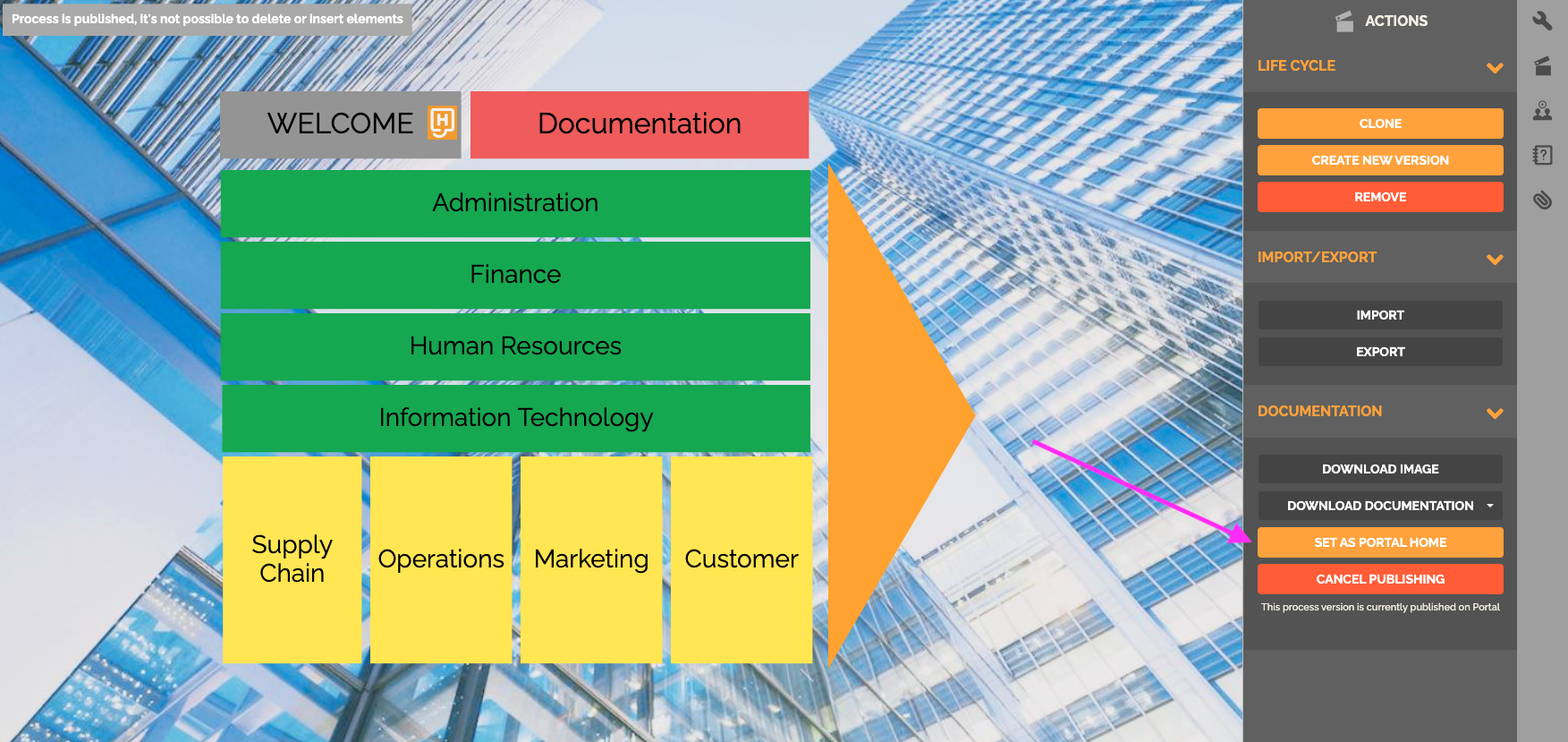
What did you think of this feature? If you have any suggestions, please leave a comment.

